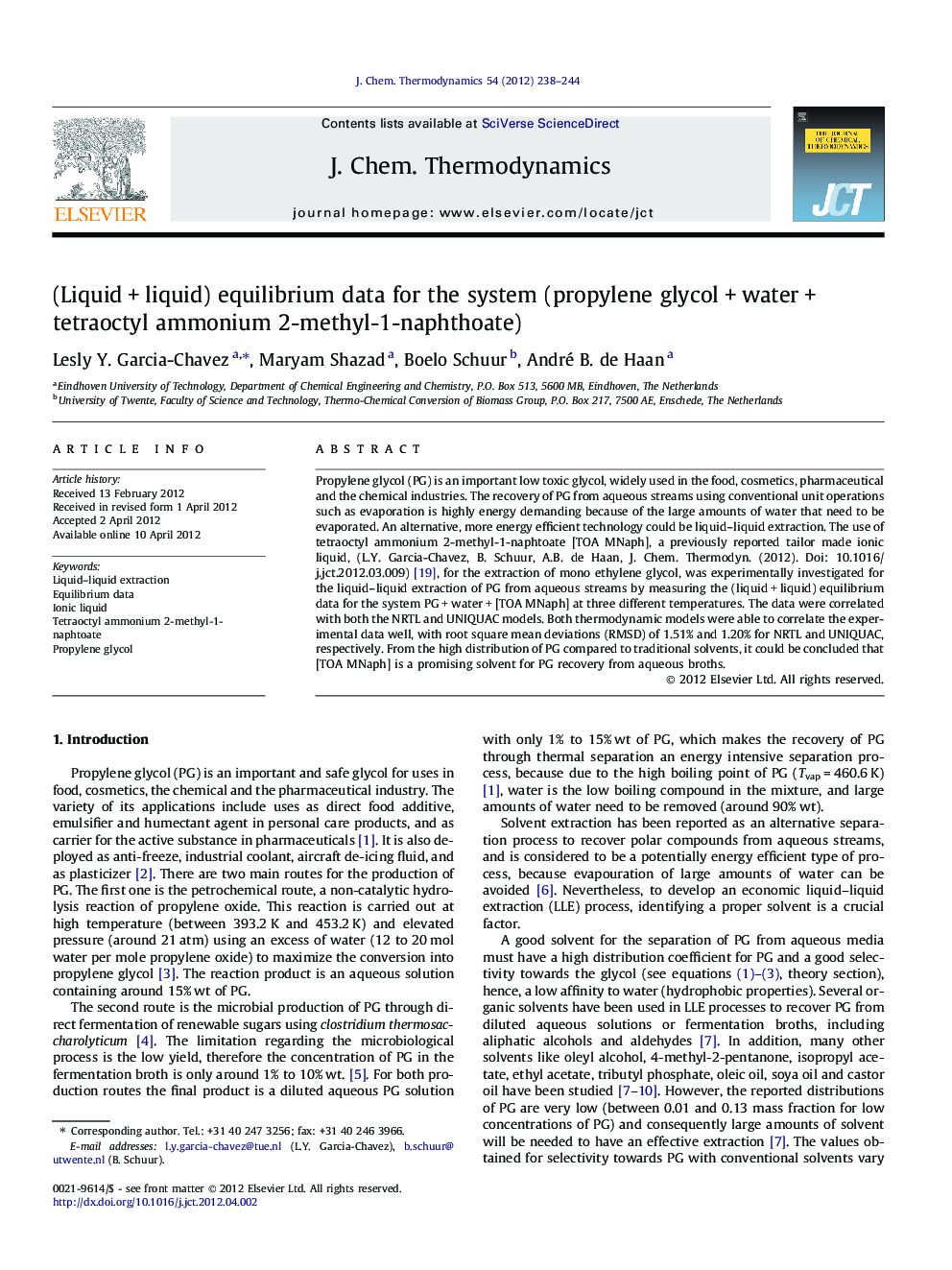| کد مقاله | کد نشریه | سال انتشار | مقاله انگلیسی | نسخه تمام متن |
|---|---|---|---|---|
| 215669 | 1426259 | 2012 | 7 صفحه PDF | دانلود رایگان |

Propylene glycol (PG) is an important low toxic glycol, widely used in the food, cosmetics, pharmaceutical and the chemical industries. The recovery of PG from aqueous streams using conventional unit operations such as evaporation is highly energy demanding because of the large amounts of water that need to be evaporated. An alternative, more energy efficient technology could be liquid–liquid extraction. The use of tetraoctyl ammonium 2-methyl-1-naphtoate [TOA MNaph], a previously reported tailor made ionic liquid, (L.Y. Garcia-Chavez, B. Schuur, A.B. de Haan, J. Chem. Thermodyn. (2012). Doi: 10.1016/j.jct.2012.03.009) [19], for the extraction of mono ethylene glycol, was experimentally investigated for the liquid–liquid extraction of PG from aqueous streams by measuring the (liquid + liquid) equilibrium data for the system PG + water + [TOA MNaph] at three different temperatures. The data were correlated with both the NRTL and UNIQUAC models. Both thermodynamic models were able to correlate the experimental data well, with root square mean deviations (RMSD) of 1.51% and 1.20% for NRTL and UNIQUAC, respectively. From the high distribution of PG compared to traditional solvents, it could be concluded that [TOA MNaph] is a promising solvent for PG recovery from aqueous broths.
► Recovery of PG from water using a task specific ionic liquid [TOA MNaph].
► LLE data was correlated using the NRTL and UNIQUAC at three different temperatures.
► Both models describe the system adequately RSMD: 1.51% NRTL and 1.20% UNIQUAC.
Journal: The Journal of Chemical Thermodynamics - Volume 54, November 2012, Pages 238–244